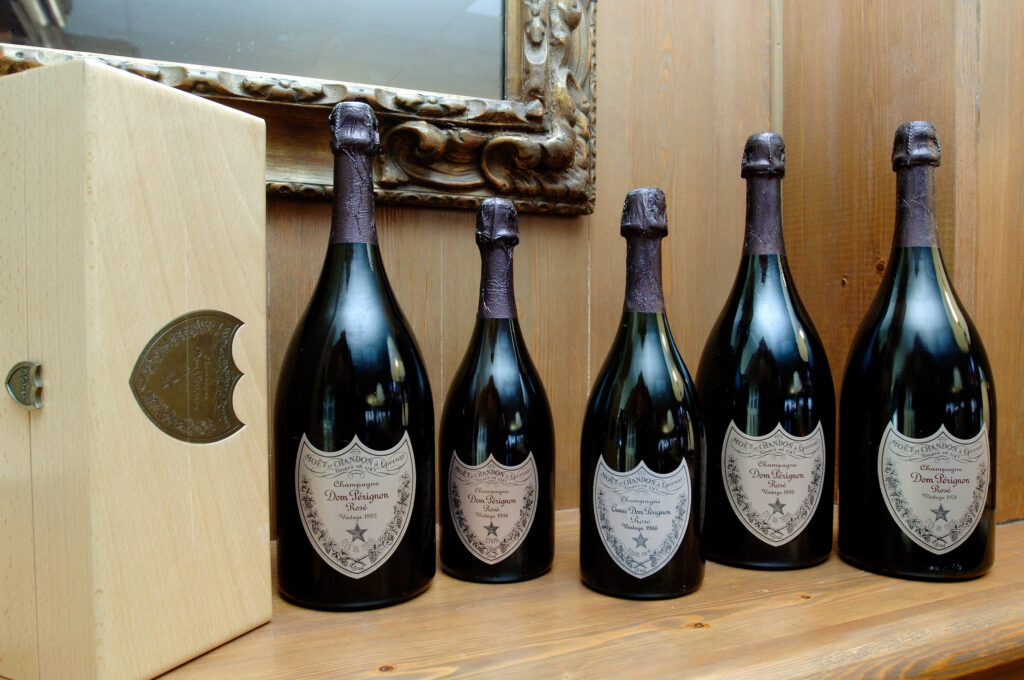Dom Pérignon champagne is some of the finest sparkling wine on the planet, but where is it made?
Like all champagnes, Dom Pérignon is made in the Champagne region of France. It’s crafted by the expert vintners of Moet et Chandon at a champagne house near Hautvillers, an intensely important location for the history of champagne.

Read on to learn more about Dom Pérignon, who makes it, and where.
Aged Like A Fine Wine
The history of wine is a lengthy and storied one, stretching back thousands of years – as many as seven thousand. This is only an estimate and the reality may actually trace back further than we think.
Wine production was a common occurrence in many countries around the world, being one of the strange practices that traveled without any communication. There is evidence of wine having been created in China, Iran, Italy, and Greece several thousands of years ago, but these nations often had little to do with one another.
It seems that while humans were carving out their place in the world, one of the first traditions they collectively stumbled upon was the consumption of fermented beverages.
However, as with many things, there has to be one place that does it better than everyone else. Although it’s a subject of debate among the wine world, that title should likely be bestowed upon the nation of France.
It’s a highly competitive market, as there’s so much money in it. In 2018 it was estimated that the global wine market was worth around three-hundred and fifty billion dollars.
Around the world, there are countless wineries that compete to be the top dog, but they rarely come close to the universally recognized champagnes. This variant of sparkling wine dates back almost four hundred years, and even today is known as the highest standard of wine.
Technically, for champagne to be called champagne, it must originate from the Champagne region of France. This isn’t just a pretentious wine-making rule, it’s actually European law.
It was in this region that the famous Benedictine vintners experimented heavily with wine several hundred years ago. The end result was a string of innovations that ultimately led to the creation of champagne – though not as we know it today.
The Dom of Champagnes
If we fast forward a few centuries, we arrive in 1921 and are greeted warmly by the legendary champagne house, Moet et Chandon. They’re based in the heart of Champagne country, with their main house being located right alongside the birthplace of the beverage.
In Hautvillers, Moet et Chandon was getting to work crafting a prestige wine, the first vintage of what would become known as Dom Pérignon. Although owing to the aging process of the wine, it wouldn’t be released until 1936, more than a decade later.
The name ‘Dom Pérignon’ is a poignant one, with a legendary backstory. It originally belonged to a competing champagne house, Champagne Mercier.
However, there was a marriage between a Chandon and a Mercier (these were often family-run businesses) in 1927. At that point, Mercier gifted the Dom Pérignon name to Moet et Chandon, and history was made.
Although, the name does go back much further through history. There was a Benedictine monk called Dom Pérignon who was credited with many innovations in the wine-making process, as he had dedicated his life to the craft.
Since that one day, Dom Pérignon has been the de facto standard for prestigious and luxurious champagnes. It’s painstakingly crafted by expert and experienced vintners, with around six vintages being released every decade.
The wine itself is crafted with a delicate and perfect blend of grapes, producing a ‘wonderfully fine’ taste, nose, and appearance.
Today, Dom Pérignon wine is produced in massive amounts, with some five million bottles being filled per vintage. This doesn’t seem to impact the value of the wine, though, and it still retains an air of exuberance, exclusivity, and wealth.
Of course, there are many factors that go into the value of a bottle of wine. Firstly, there’s the vintage, or the age – the older it is, the better… Usually.
For example, a bottle of original vintage Dom Pérignon Rosé from 1959 would cost you around forty-thousand dollars today at auction. The cost of a regular bottle of Dom Pérignon would likely be around two hundred dollars.
The Benedictine monks must have got something right.
